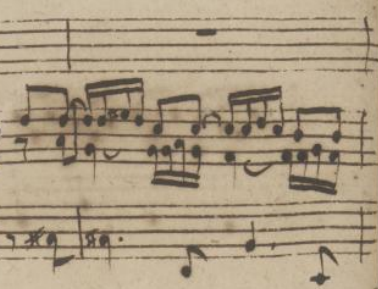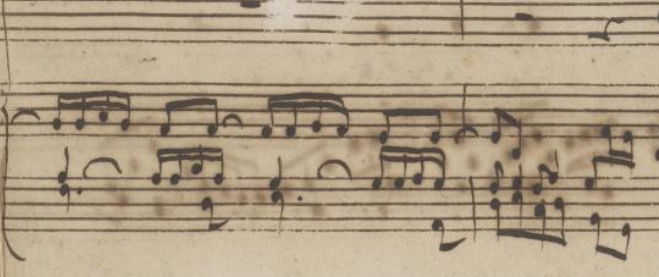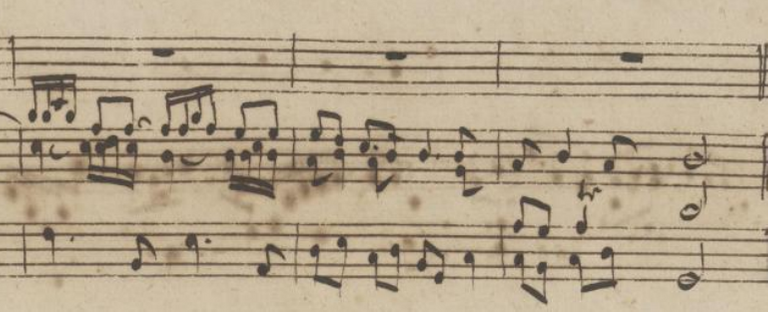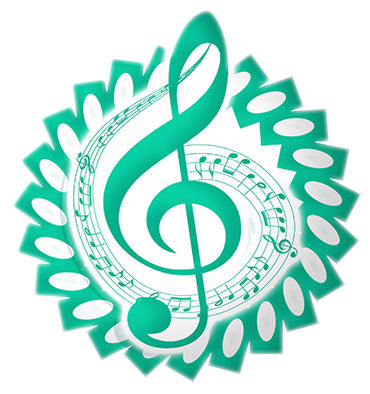After my reconstructions of Sorge's choral preludes to the chorals "O Herre Gott, dein Göttlich Wort" and "Allein Gott in der Höh sei Ehr" I thought that three times is a charm and I should try a third restoration.
A third incomplete composition in manuscript Go. S. 597 is the choral prelude based on the melody of "Nun freut euch, lieben Christen g'mein". The melody of that choral goes like this:

Only the music corresponding to the second system in the above figure survives in the manuscript. The first half is therefore missing. As in the case of the reconstruction of "Allein Gott in der Höh sei Ehr" I have to come up with an introduction of about 8 bars and with music to accompany the first half of the choral melody.
Most of the time Sorge does not repeat the music of his introduction in the rest of the piece, though most of the time there is some relation. Motives are repeated and sometimes somewhat longer fragments. So, whatever I come up with, there must be some relation with the music that survives in the manuscript.
In this case the choice of which element should appear in the introduction is made rather easy by Sorge himself. The three phrases of the choral melody that are in the manuscript are adjoined with two short interludes that both employ a very similar piece of music. The short coda that Sorge writes after the last phrase of the choral melody employs that same fragment of music:



I decided therefore that the introduction should feature this same fragment of music.
If you look closely to the melody of the choral you'll notice that the last phrase of the melody and the last phrase of the melody before the repeat are both the same. I can therefore reuse the music Sorge writes the accompany the last phrase of the choral melody for the last phrase of the choral melody before the repat. And I only have to write new music to accompany the first phrase of the choral melody.
The music between the first phrase of the choral melody and the second phrase of the choral melody could be easy as well. I could repeat what Sorge writes before the last phrase of the choral melody. And that would be very idiomatic for Sorge's musical language because he wrote that fragment of music himself. But it would also be a bit boring to have nothing else than that same fragment of music between all the phrases of the choral melody.
I decided to take a bit of artistic liberty and write something else to join the first two phrases of the choral melody. And instead of having the bass voice move downwards in fourth and fifth leaps as Sorge does in his original fragment, I decided to let the bass voice move upwards. And the result looks like this:

And though this fragment of music employs the same musical motives as Sorge's original fragment of music, it is obvious he did not write it. It is slightly too dissonant to be passable as music by Sorge's hand.
Nevertheless, I think it creates a nice change in what otherwise would be a bit boring. Anyone who wants to play as much of Sorge's original as is possible should play Sorge's music between the final two phrases of the choral melody instead of my invention.
Tomorrow I'll upload a recording of my reconstruction. And then you can judge for yourself whether or not my invention spicens the music up a bit. And if not, one can always choose to play Sorge's interlude instead. All the elements are after all in the score I'll publish tomorrow as well.


